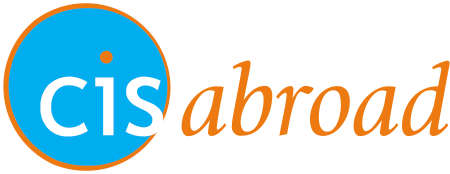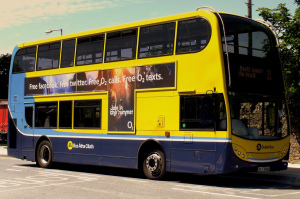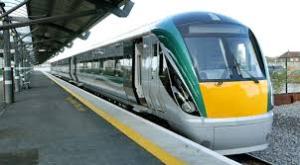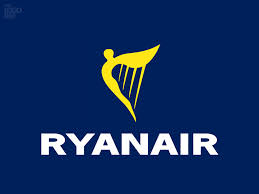Planes, trains and automobiles…what’s the best way to get around?
Ireland has so much to see and experience, so naturally there is an abundance of public transport and travel options.
Pick-pockets: While traveling in Ireland is a breeze, it is always important to be aware of your surroundings. Pick-pocketing is a major occurrence, especially in larger cities. Make sure that your bag is zipped up and carried in front of you and that your wallet is tucked away safely. It is also a good idea to keep copies of your passport and essential documents in your dorm or hotel room, just in case. Keep an eye out for yourself and your friends on crowded metro trains and don’t be afraid to make a lot of noise if you see something out of place. Pick-pockets scare easily!
Buses and Walking:
The most inexpensive and convenient travel for getting around the city or taking a day trip would be by bus. There are comprehensive local bus networks in Dublin (Dublin Bus), Limerick (Bus Éireann) and some other larger towns. Bus Éireann is one of Ireland’s largest and most accessible bus companies. They service the city buses in many areas, as well as offering airport transportation and routes between cities. The bus schedules tend to be reliable, and fares range from €0.90- €2.20 per ride in the city. To see timetables and more information, please visit their website here.
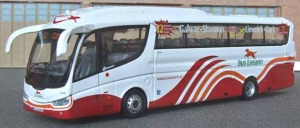
Bus and walking tours are available in most cities, and the areas tend to be quite walk-able, particularly in the more popular tourist areas. The CDC warns pedestrian travelers to be alert when crossing streets, especially in countries where motorists drive on the left side of the road, and to walk with a companion or someone from the host country.
Trains:
Trains are another great option for public transport, although they are not as widely run as the bus systems. The Iarnród Éireann (Irish Rail) operates trains in the Republic on routes that fan out from Dublin. The system is limited though: there’s no north–south route along the western coast, no network in Donegal, and no direct connections from Waterford to Cork or Killarney. Train travel is more expensive than bus travel and one-way fares are particularly poor value – a midweek return ticket is often about the same as a one-way fare. First-class tickets cost around €5 to €10 more than the standard fare for a single journey. For more information on the Irish Rail system, please see their website here.
Taxis:
Another option to consider are the abundance of taxis available in most cities. Taxis do tend to be more expensive than public transport, especially in larger cities, but are safe and reliable modes of transportation. As noted previously, it is not standard to tip taxi drivers in Ireland, although you are welcome to do so.
Rental Cars:
It is possible to rent a car as an American without needing an international license. However, it is highly discouraged for multiple reasons.
- Vehicles drive on the left side of the road, and are built accordingly. Steering wheels are found on the right side of the car.
- Renting a car is quite expensive, and you could be liable for any number of things going wrong with the vehicle.
- Automatic transmission cars are not common, and are expensive when they are available.
- Fuel, or “petrol” is quite expensive in Europe, and is sold by the litre, not the gallon.
- Speed and mileage is calculated in kilometers, not miles.
Air Travel:
Ireland’s size makes domestic flying unnecessary unless you’re in a hurry, but there are flights between Dublin and Belfast, Cork, Derry, Donegal, Galway, Kerry, Shannon and Sligo, as well as a Belfast–Cork service. Most flights within Ireland take around 30 to 50 minutes. Aer Lingus is Ireland’s only domestic carrier, but check out RyanAir as well for flights. RyanAir is one of the most affordable carriers in Ireland, and offer “no-frills” flights throughout Ireland and Europe.
#CISabroadstaff411: Keep an eye out for promotions and last-minute deals with RyanAir, as they often offer unbeatable rates.
Ferries:
Ireland being an island, water travel is often a necessity, especially when visiting the popular islands lying off the coast, including to the Aran and Skellig Islands to the west, the Saltee Islands to the southeast, and Tory and Rathlin Islands to the north. Ferries are a great method of travel, and operate across rivers, inlets and loughs, providing useful shortcuts, particularly for cyclists. Prices will vary, depending on your destination and duration, but ferry companies are quite easy to find and book.
Bicycles:
If you intend to cycle in the west, the prevailing winds mean it’s easier to cycle from south to north.
Bicycling is an ideal way to explore the Irish landscape. The distances are quite manageable, and Ireland is a great place for bicycle touring, despite bad road surfaces in places and inclement weather. Hostels, B&Bs, and hotels are abundantly available for touring cyclists who don’t want to deal with the extra weight of a tent and sleeping bag. Bicycles can be transported by bus if there’s enough room; the charge varies. By train the cost varies from €3 to €10 for a one-way journey, but beware that bikes may not be allowed on certain train routes.
Typical bicycle hire costs are €15 to €25 per day or €60 to €100 per week plus a deposit of around €100. There are many local independent outlets, but several dealers have outlets around the country: Irish Cycle Hire, Raleigh Ireland. If you would prefer a pre-organized tour, check out Irish Cycling Safaris.
Frommer’s Guide and the Lonely Planet website has and the lots of great cycling and travel tips, like this one: remember to cycle on the left!
Crossing International Borders:
Travelling from Ireland to other European countries (including Northern Ireland and the United Kingdom) is considerably easier than travelling from the United States. You will need your United States passport and your Irish Immigration card, which you will receive once you arrive in Ireland.
Be sure to research if you will need any additional documentation before visiting another country.
